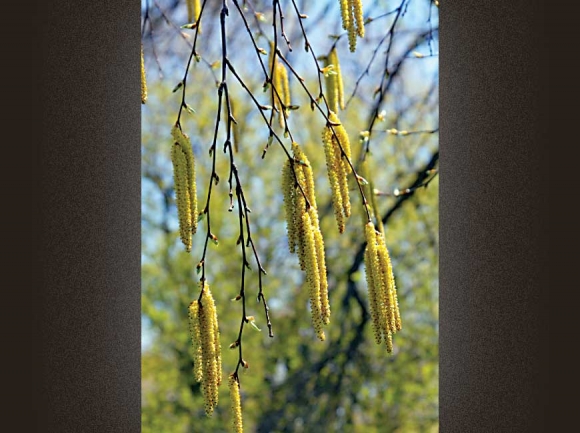Birch stills were once plentiful in the mountains
 Sweet Birch Catkins. Donated photo
Sweet Birch Catkins. Donated photo
Throughout spring the pendent catkins of sweet birch (Betula lenta) will be dangling gracefully in the wind in rich woodland settings below 4000 feet.
Catkins are the male pollen-carrying portion of the sweet birch (Betula lenta), also known as black, cherry, or mahogany birch.
They serve as a reminder that moonshine stills weren’t the only kind of stills that once proliferated the region. Indeed, there was a time more than a century ago when birch stills were more common than moonshine stills. They weren’t illegal and didn’t need to be hidden.
Birch stills rendered an extract known as either “birch oil” or “oil of wintergreen.” This was used to flavor candies, medicines, and drugs.
Another source for the extract had been the little woodland plant named wintergreen (Gaultheria procumbens), also called checkerberry or teaberry. But sweet birch became the more popular source in the latter part of the 19th century.
A description of a still was provided by longtime Asheville Citizen-Times columnist John Paris in one of his columns about local history:
Related Items
When I was a boy, my father had a still that he would move about through the mountains to wherever he run on a good stand of sweet birches. Back then, sweet birch was the source of wintergreen oil. He would strip the bark from the sweet birches and distill the oil. His still was made out of two-inch wood that would hold steam. There was a cap over it and a pipe or worm went into it. It had a furnace like an old-time molasses furnace. As the oil was distilled, it came out of the worm and dropped off into a can of water. Instead of floatin’ like most oils, it sank to the bottom of the can of water.
It would take a day and night to make a run, which would be from about a half gallon to three quarts. It fetched $1.25 a pint and folks back then thought that was pretty good money. In the 19th century, $1.25 for a full day’s (and night’s) work was very good money. For instance, as late as the 1930s construction workers along the Blue Ridge Parkway were paid just 30-cents an hour. But, of course, they thought that was “pretty good money,” and it was.
The problem birch distilling, however, was the devastating amounts of sweet birch required to produce a single quart of oil. After all of the choice bark from the larger trees had been stripped and processed, the birch distillers turned to birch saplings — using both bark and wood chips — as their source. It required 100 or so of these saplings to render a single quart of the oil from the crude stills.
The sweet birch stands in our forests were spared total decimation by the fortuitous development of synthetic oil of wintergreen. This process combines wood alcohol and salicylic acid.”
Old-time mountaineers also made beer, tea, and syrup from the sap of the sweet birch tree via processes that one can still utilize. The tea-making process is real simple. Gather a little bark and strip out the inner red side. Cut this inner bark into small pieces and pour boiling water over it.
Making birch syrup is probably a waste of time. After going to the trouble to tap the trees in early spring, you’ll only get about a pint of syrup per 10 gallons of boiled sap.
A recipe for birch beer found in several sources reads as follows: “Tap the trunk as the sugar maple is tapped, in spring when the sap is rising and the buds are just swelling; jug the sap and throw in a handful of shelled corn, and natural fermentation … [this] will finish the job for you.”
Other sources append this warning about birch beer: “It has a reputation for stimulating the appetite. But more than a glass or two at a time is liable to stimulate other things, for it has a kick like a mule.”
(George Ellison is a naturalist and writer. He can be reached at This email address is being protected from spambots. You need JavaScript enabled to view it..)









